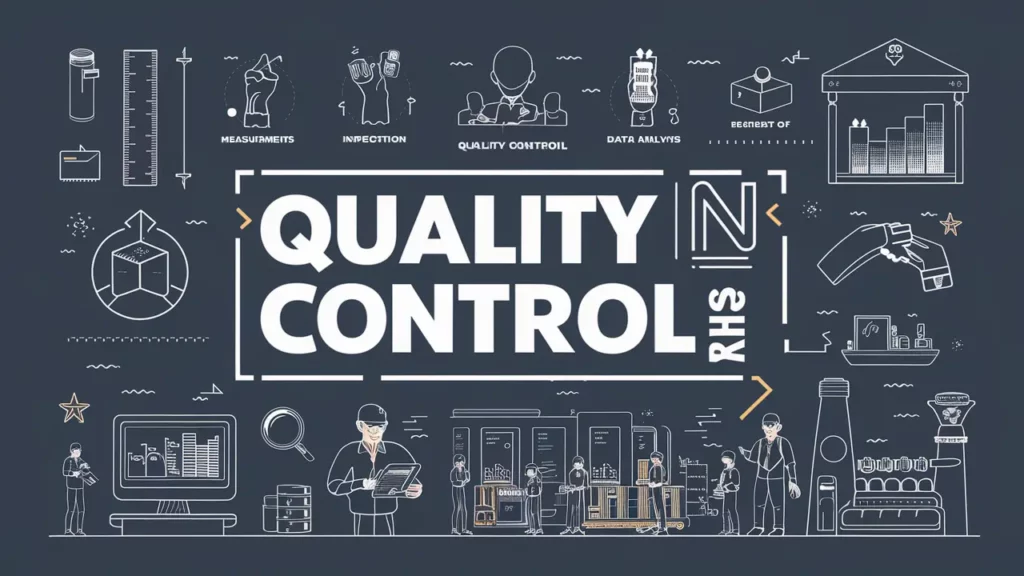Introduction
Quality control and assurance are essential parts of every successful business operation. These processes ensure that products or services fulfill certain specifications and maintain consistent quality. Businesses that employ a thorough quality control and assurance system can drastically reduce errors, waste, and enhance overall efficiency.
THE ROLE OF QUALITY CONTROL AND ASSURANCE
Quality control (QC) and quality assurance (QA) are two separate processes that work together to ensure the quality of the final product or service. QC refers to the operational processes and activities utilized to meet quality criteria, such as product inspections and testing. In contrast, QA is a larger concept that incorporates the full system of assuring that products are created and manufactured to meet or exceed consumer expectations. QA entails the creation of systems and procedures for achieving and maintaining quality.
BENEFITS OF A STRONG QUALITY SYSTEM
A strong quality system provides various advantages to firms. It aids in maintaining consistency in product or service delivery, which is essential for establishing consumer trust and loyalty. Customers are more inclined to become repeat shoppers if they know they can anticipate the same level of quality with each purchase. Furthermore, achieving client expectations is critical for positive word-of-mouth and can result in new customer acquisitions.
Additionally, a robust quality system can boost a company’s market reputation. Businesses that prioritize quality frequently distinguish themselves from competitors, which may be a substantial advantage in crowded markets. This reputation for quality can also lead to new markets and alliances, as other businesses will be more likely to work with a brand that has an established track record of success.
REAL-LIFE EXAMPLES OF QUALITY CONTROL SUCCESS
Several successful businesses have made quality control and assurance a key component of their operations.
Toyota
Has a reputation for quality and dependability due to innovative manufacturing techniques and strict quality control processes known as the Toyota Production System (TPS). TPS emphasizes continuous improvement and waste removal, making Toyota synonymous with quality in the automotive industry.
Apple Inc.
has established industry standards via diligent attention to detail and stringent quality assurance methods. Apple’s products are noted for their high-quality materials, precision engineering, and user-friendly design, all of which result from a rigorous QA process that includes design, manufacture, and post-sale customer service.
Building Your Quality Control Blueprint: A Step-by-Step Guide
Developing an efficient quality control and assurance process is critical for any company seeking to offer products or services that meet or exceed customer expectations. Here’s a step-by-step approach to implementing a strong quality management system in your firm.
SETTING QUALITY STANDARDS
The first step in developing a quality control and assurance process is to create clear, measurable quality standards that align with your company’s goals and consumer expectations. These standards should be specific, attainable, applicable, and time-bound. They will act as benchmarks by which the quality of items or services can be measured. When establishing these quality benchmarks, consider industry standards, legal requirements, and consumer feedback.
IMPLEMENTING QUALITY CONTROL MEASURES
Once quality standards have been established, the next stage is to develop control methods to verify that these standards are constantly met. This entails creating specific processes and protocols for each step of the manufacturing or service delivery process. Identify crucial control points where inspections or tests should be performed to detect deviations from the established standards. It is critical to document these procedures and make them accessible to all relevant staff members.
TRAINING STAFF
A quality control and assurance method is only as effective as the people who use it. Invest in extensive training programs to ensure that your employees understand quality standards, the importance of meeting them, and the precise procedures that must be followed. Regular training sessions will assist your personnel in maintaining a high level of quality awareness and competency.
USING TECHNOLOGY FOR QUALITY ASSURANCE
Use technology to improve your quality assurance processes. This may include employing software to track manufacturing processes, automating inspections, and collecting and analyzing data to find patterns and opportunities for improvement. Technology can also permit real-time monitoring and reporting, allowing for faster and more informed decision-making.
CONTINUOUS IMPROVEMENT
Quality control and assurance are ongoing processes. Create a culture of continuous improvement by continually examining and revising your quality standards and control mechanisms. Encourage feedback from employees, customers, and other stakeholders to help discover areas for improvement. Use methods such as the Plan-Do-Check-Act (PDCA) cycle to continuously enhance the quality of your products or services.
REGULAR AUDITS
Conduct regular internal and external audits to determine the effectiveness of your quality control and assurance procedure. Internal audits can be completed by your employees, but external audits may involve third-party organizations. These audits serve to guarantee compliance with specified standards and identify any gaps or areas that require correction.

Mastering Quality Control: Tackling Common Implementation Hurdles
RESISTANCE TO CHANGE
Implementing quality control often faces employee resistance due to fear of change, workload concerns, or doubts about efficiency. Involve team members in planning and implementation, and clearly communicate the system’s benefits. Provide thorough training to ensure everyone understands their role. Encourage feedback and incorporate suggestions to ease the transition and foster a sense of ownership.
LACK OF RESOURCES
Small enterprises often face resource constraints like budget limits, insufficient staff, or lack of expertise, hindering strong quality control systems. Prioritize key quality assurance areas and adopt phased implementation to manage costs and workload. Consider outsourcing specialized tasks and invest in staff training to build in-house expertise. Utilize low-cost quality management software to streamline processes and reduce manual oversight.
DIFFICULTY IN MAINTAINING CONSISTENCY
Maintaining consistency in quality control methods is challenging, especially with multiple products or services. Standardize procedures and documentation to achieve uniformity. Create clear rules and checklists accessible to all staff. Conduct regular audits to identify and correct inconsistencies. Foster a culture of continuous improvement by encouraging staff to suggest process enhancements for more efficient operations.
Takeaways and Action Items
The journey towards mastering quality control underscores the importance of clear communication, strategic resource management, and a commitment to continuous improvement. By integrating Financial Reporting for SMBs and exploring Business Scaling Strategies, SMBs can ensure that their quality control processes are not only effective but also conducive to growth.
Adopting a phased approach to quality assurance, prioritizing critical areas, and exploring outsourcing for specialized tasks can help small businesses overcome resource constraints. Building in-house expertise and utilizing cost-effective technological solutions can streamline processes and reduce manual oversight. Ultimately, the successful implementation of quality control and assurance processes hinges on the commitment to maintaining high standards, adapting to feedback, and continuously seeking ways to enhance efficiency and product quality, thereby securing customer satisfaction and bolstering the company’s reputation.
| ✳️Conduct a Comprehensive Analysis of Current Quality Levels ✳️Develop Clear and Measurable Quality Standards. Involve Stakeholders in the Process. ✳️Implement and Communicate the New Quality Standards | |
| ✳️Design the Training Program: Identify Training Needs, Design Training Contents and Select Trainers. ✳️Schedule and Execute the Training Sessions. ✳️Evaluate and Reinforce Training Outcomes. | |
| ✳️Select the Appropriate Quality Management Software. ✳️Implement the Software. ✳️Train Staff and Launch the Software. | |
| ✳️Establish the Framework for the Continuous Improvement Program. ✳️Engage and Train Employees. ✳️Launch and Monitor the Program. | |
| ✳️Plan and Schedule the Audits. ✳️Prepare for the Audits: Select audit teams, Develop Audit Checklists and Criteria, Conduct Pre-Audit Meetings. ✳️Execute, Report, and Follow Up on the Audits. |
FAQ
Get your FREE 8 Gears Assessment Score in 10 minutes!


